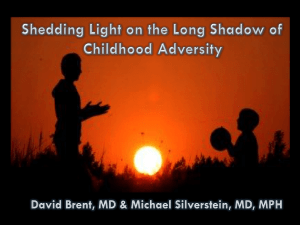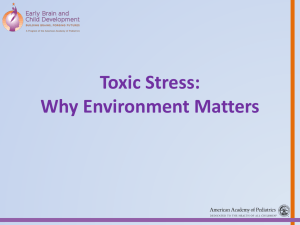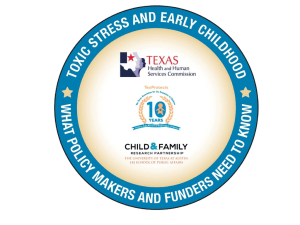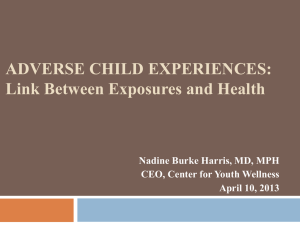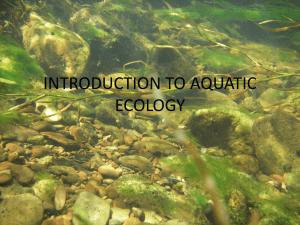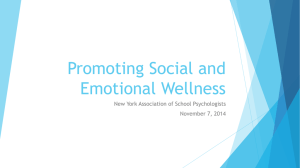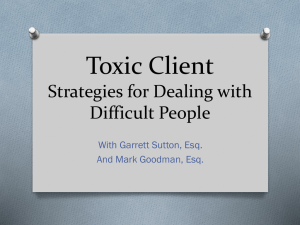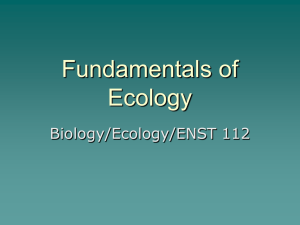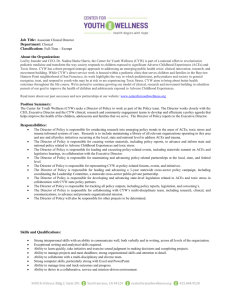Tess Barker`s PowerPoint Presentation
advertisement
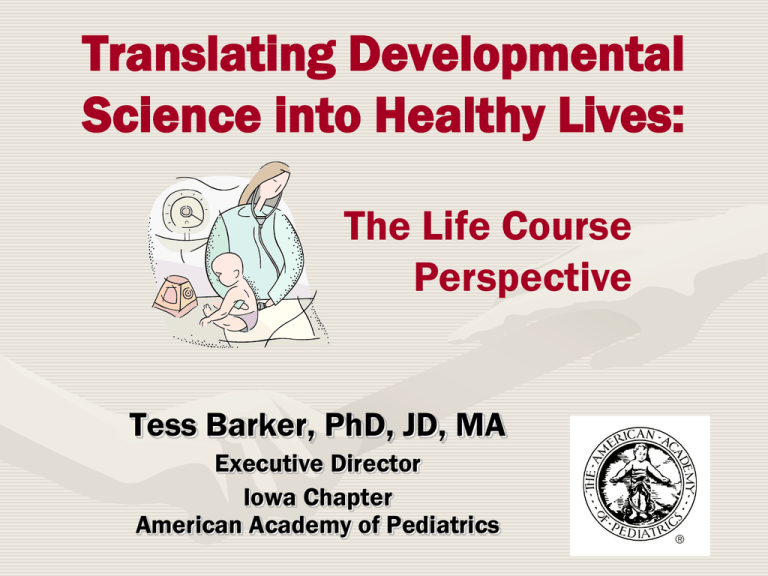
Translating Developmental Science into Healthy Lives: The Life Course Perspective Tess Barker, PhD, JD, MA Executive Director Iowa Chapter American Academy of Pediatrics Foundation of AAP’s Life Course Model Childhood adversity has lifelong consequences. Significant adversity in childhood is strongly associated with unhealthy lifestyles and poor health decades later. ACEs Study Women Men (n=9,367) (n=7,970) 13.1% 7.6% 27.0% 29.9% 24.7% 16.0% • Abuse – Emotional – Physical – Sexual • Household Dysfunction – Mother Treated Violently 13.7% – Household Substance Abuse 29.5% – Household Mental Illness 23.3% – Parental Separation or Divorce 24.5% – Incarcerated Household Member 5.2% • Neglect* – Emotional 16.7% – Physical 9.2% * Wave 2 data only (n=8,667) Total (17,337) 10.6% 28.3% 20.7% 11.5% 23.8% 14.8% 21.8% 4.1% 12.7% 26.9% 19.4% 23.3% 4.7% 12.4% 10.7% 14.8% 9.9% Data from www.cdc.gov/nccdphp/ace/demographics The ACEs Pyramid Mechanisms By Which Adverse Childhood Experiences Influence Adult Health Status ACEs Impact Multiple Outcomes Smoking Alcoholism Promiscuity Relationship Problems High perceived stress Married to an Alcoholic Difficulty in job performance Poor SelfRated Health Hallucinations High Perceived Depression Obesity General Health and Sleep Risk of HIV Social Functioning Disturbances Risk Factors for Mental Common Diseases Health Memory Disturbances Poor Perceived ACEs Illicit Drugs Anxiety Health IV Drugs Panic Reactions Prevalent Sexual Multiple Somatic Poor Anger Health Diseases Symptoms Control Cancer Liver Disease Teen Paternity Fetal Death Skeletal Chronic Lung Teen Unintended Fractures Disease Pregnancy Pregnancy Sexually Early Age of Ischemic Heart Disease Sexual Dissatisfaction Transmitted First Diseases Intercourse Developing a Model of Human Health and Disease How do you begin to define or measure the ecology? What are the mechanisms underlying these well-established associations? Life Course Science Early childhood ecology strongly associates with lifelong developmental outcomes Measuring Adversity or Stress • How do you define or measure adversity? • Promote Positive Stress – Social-emotional buffers – Builds motivation and resiliency • Mitigate Toxic Stress – Long lasting, frequent, or strong intensity – More extreme precipitants of childhood stress (ACEs) – Insufficient social-emotional buffers Impacts of Toxic Stress Potentially permanent changes and long-term effects of toxic stress: •Epigenetics –there are life long / intergenerational changes in how the genetic program is turned ON or OFF •Brain architecture –the mediators of stress impact upon the mechanisms of brain development / connectivity Developing a Model of Human Health and Disease Biology Physiologic Adaptations and Disruptions Life Course Science Through epigenetic mechanisms, the early childhood ecology becomes biologically embedded, influencing how the genome is utilized Developing a Model of Human Health and Disease Biology Physiologic Adaptations and Disruptions Life Course Science Declining plasticity in the developing brain results in potentially permanent alterations in brain functioning and development Eco-Bio-Developmental Model of Human Health and Disease Across the Lifespan Biology Physiologic Adaptations and Disruptions The Basic Science of Pediatrics Life Course Science Ecology Becomes biology, And together they drive development across the lifespan One Science – Many Implications Epigenetics Physiology of Stress Neuroscience The Science of Early Brain and Child Development Education Health Economics The critical challenge now is to translate game-changing advances in developmental science into effective policies & practices for families with children to improve education, health and lifelong productivity. Advantages of an EBD Framework • Though grounded in developmental science, the simplicity of the EBD framework may promote understanding as well as support for translation • Psychosocial stressors and other salient features of the ecology are every bit as biological as nutrition or lead – no distinction between mental and physical health, just healthy vs. unhealthy development • Emphasizes time, reflecting the on-going, cumulative nature of benefits and threats to health and wellness Advantages of an EBD Framework • Underscores the need to improve the early childhood ecology in order to: – Mitigate the biological underpinnings for educational, health and economic disparities – Improve developmental/life-course trajectories • Highlights the pivotal role of toxic stress – Not just about enrichment activities – But also about treating, mitigating or immunizing against toxic stress SUMMARY • Toxic stress is a mediator between early childhood adversity and less-than-optimal outcomes in learning, behavior and health – Excessive or prolonged physiologic stress response results in potentially permanent changes in: •Gene expression (epigenetics) •Brain development (neuroscience) •Behavior (allostasis) • Understanding the biology underlying these well established associations opens up new opportunities for primary prevention and early intervention The Questions are… If TOXIC STRESS is the missing link between ACE exposure and poor adult outcomes, then: • Are there ways to: – treat, – mitigate, and/or – immunize against the effects of toxic stress? • If so, is there a mismatch between: – what we KNOW … and … – what we actually DO? A Public Health Dilemma: Do we continue to treat disease? or the unhealthy lifestyles that lead to disease? or the toxic stress that leads to the adoption of unhealthy lifestyles? Eco-Bio-Developmental Model of Human Health and Disease Biology Physiologic Adaptations and Disruptions The Basic Science of Pediatrics Life Course Science Ecology Becomes biology, And together they drive development across the lifespan
